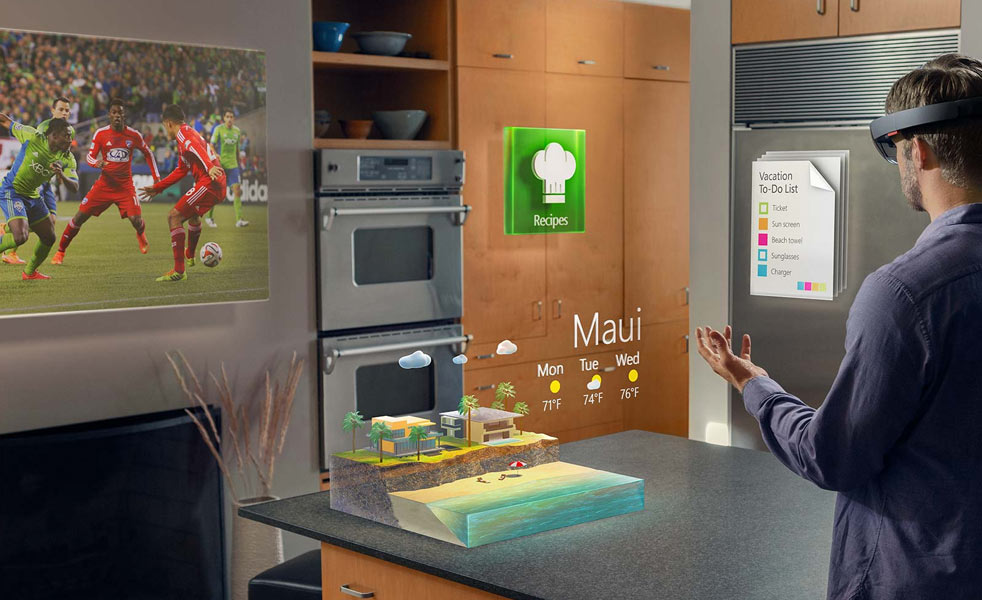Augmented Reality? Real Reality? I don’t know.

We are suddenly seeing all kinds of alternate ‘realities’ being made possible through technology. The most common of these is the oxymoronic virtual reality, which although an idea for decades (it even had a web language known as VRML that would allow 3-d worlds inside a web browser), now seems as though it might actually be coming to fruition thanks to Sony’s PS4-based Project Morpheus, due in early 2016, HTC/Valve’s PC-based Re Vive which came out of nowhere and is due later this year, and the now-owned-by-Facebook Oculus Rift, due…sometime.
There is also a less well-known reality known as ‘Augmented Reality,’ in which data is superimposed over the real world. The most high-profile example of this is the recently demoed Microsoft HoloLens. It’s a remarkable headset that not only displays data in the real world but allows interaction with that data (its functionality is projected to be incorporated into Windows 10).
But now, there’s some under-the-radar talk of a new type of reality. I can only come up with the name ‘Real Reality,’ and here’s why. At the ‘Biology is Technology‘ conference, DARPA (The government entity credited with creating the Internet) announced what they call a ‘Cortical Modem.’ This modem would be a very small device attached directly to the visual cortex in your brain that would superimpose data and visuals right onto your cerebellum, and you would ‘see’ that information as though it were right in front of you.
Apparently this is something that is actually in the works right now, and not a dream or a future plan or an on-paper concept.
And why not, I say? Let’s skip all these other realities and get right to the future. Just implant a data-visualization system right onto my gray matter. The only issue I have with it is when the technology becomes obsolete within two years. What will it take to upgrade the hardware or software? Another major surgery?

